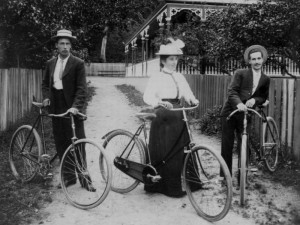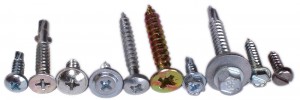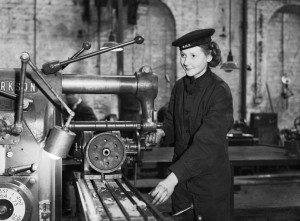 In our first post on line balancing, we looked at the tasks that must be included in the line. In this second post of this series on line balancing, we look at the durations for the individual tasks. Of particular interest are different strategies on how to balance a line if the tasks have different durations for different products. A second consideration is if the equipment is already available or is still to be purchased (and hence can be customized more). The next post will look at more details of the losses (i.e., the OEE).
In our first post on line balancing, we looked at the tasks that must be included in the line. In this second post of this series on line balancing, we look at the durations for the individual tasks. Of particular interest are different strategies on how to balance a line if the tasks have different durations for different products. A second consideration is if the equipment is already available or is still to be purchased (and hence can be customized more). The next post will look at more details of the losses (i.e., the OEE).
How Long Will It Take?

The next step is to determine the duration of each of these tasks. This is relatively easy if all products have the same steps and the same time for each step. The time should be excluding all losses.
If it is a machine you already have, it would be the cycle time (i.e., the time between completion of a part excluding all losses and disturbances). Getting this time usually isn’t too difficult, but there are a number of pitfalls. For more details, see my series on How to Measure Cycle Times – Part 1 and Part 2.
For manual work, you can also determine the times needed without losses. See also my post Cycle Times for Manual Processes.
If your system already exists, these times are reasonably well defined. You can measure the cycle times of your machines. You can also measure the cycle times of your manual work. There may be small improvements possible with a new line layout, but there are rarely big changes. Please be wary of data that someone provides you. In my experience this data often turned out to be outdated or incomplete. Make sure you know which data to trust. In case of doubt, do some sample checks.
If you establish a new production system, then this is different. If you purchase new machines, you can usually influence the cycle times. If you need a cycle time of x, then you just build or purchase a machine that can meet the cycle time of x. This gives you more flexibility. During the gathering of data for the line balancing, I do not yet set a time, but merely note that this time can be flexible. Later, when I actually balance the line, I pick a time that matches my needs and my budget.
Task Duration Variations Due to Product Variations
 Having all products with identical tasks and times makes it easier. However, often the products differ, sometimes significantly. The bigger the differences, the larger the troubles. There are three different approaches you can take.
Having all products with identical tasks and times makes it easier. However, often the products differ, sometimes significantly. The bigger the differences, the larger the troubles. There are three different approaches you can take.
Pick the High Runner

You design the system based on the product that you need most frequently. Hence, you simply take the times of the high runner for the balancing. This could also be a group of products with nearly identical tasks and cycle times. The advantage is that this is easy and straightforward. It will also give you a good system for the selected high runner. On the other hand, the system may not be well designed for the other products. Overall, this is the easiest approach, and it may still work reasonably well for similar products.
Take the Weighted Averages
 You determine the cycle times for all tasks and products. For each task, you create a weighted average of the cycle time based on the quantity produced. For example, if 80% of your products have a cycle time of 60 seconds, and 20% have a cycle time of 90 seconds, then the average cycle time will be 60s·80%+90s·20%= 66 seconds. This will give you a system that is universally matched for all products, provided you fulfill two requirements:
You determine the cycle times for all tasks and products. For each task, you create a weighted average of the cycle time based on the quantity produced. For example, if 80% of your products have a cycle time of 60 seconds, and 20% have a cycle time of 90 seconds, then the average cycle time will be 60s·80%+90s·20%= 66 seconds. This will give you a system that is universally matched for all products, provided you fulfill two requirements:
- Your batch size must be very small, ideally a batch size of one. If you have larger batch sizes, it is likely that some processes will be too slow for some products to match the cycle time, while the same process will have lots of waiting time for other products.
- You need a buffer before and after the processes with larger variations in cycle time.
Assume you have a process that is slow for some products and faster for other products. For example, a two-door vehicle will have its doors installed faster than a four-door vehicle. Hence, with an average cycle time, the process of installing the door will be too fast for two-door and too slow for four-door vehicles. If there is a good mix alternating between two-door and four-door vehicles with a little buffer before and after the door installation process, then the process can take more time for four doors and catch up with the next two-door vehicle.
However, this works only with (very) small batch sizes. If you make twenty two-door vehicles followed by twenty four-door vehicles, you either need a disproportionately large buffer or you will have waiting times followed by a bottleneck at the same process. If you take the weighted average times for the tasks together with larger batches and/or insufficient buffer, your system will be too slow and will not meet the customer demand!
Design for Individual Products
This option is the most difficult one. I would prefer either the high runner or the weighted average. However, if the system is too different and you are forced to have large batch sizes, you may choose to design individual systems.

Here we have to distinguish between automatic machine processes and manual processes. You should never design a system where people regularly have to wait. This is impolite, and may also cause slack elsewhere where you don’t want it. Letting machines wait is acceptable. You will lose the work time, but it won’t be detrimental for the rest of your system. Luckily, people are flexible and the work can be adjusted more easily around manual workers.
Hence, your machines should be set up so they can match the fastest speed required. The easy way is to take the slowest cycle time needed for a task. For example, if a machine has one product that needs 30 seconds and another that needs 40 seconds, you should design the system so it can meet the customer takt if the process needs 40 seconds (be aware that we still need to include the losses through the OEE!).
Yet, if your 40-second product is rare, you may end up with a system that is faster than needed, since the 30-second product can now be produced faster than necessary. Balancing this is tricky, since it depends not only on this task but also on the variation of the times of the other tasks. To optimize, you would need to figure out the bottleneck in the system for each product and then design the system for individual products that together match the customer demand.

If this sounds hairy … yes … it is! Solving this problem for a medium-complexity system is probably worth a doctoral dissertation or two. Hence, unless you can wait four years for your Ph.D. to finish the calculations, don’t do it. Just take the easy road and have the machines match the fastest speed required, even though as a whole they may be a bit faster than needed.
For your manual work, you have the benefit of adjusting it through the number of people you put in the system. Hence, for manual work you balance the system separately for each product you produce, while keeping the process sequence the same. This is also a lot of work, not only in designing the system but also in changing the manpower for each new product. To reduce the required manpower changes, you would need larger batch sizes, and this is in my view fundamentally the wrong direction in lean manufacturing.
Hence, designing a system for each product separately is a lot of work both in design and in operations, and it includes lots of uncertainties. Don’t do it!
Summary
Overall, each task should have a duration. You can boil the ocean and do it in high detail for every product separately, but usually this is quite an effort that is rarely worth it. Much better to use a weighted average or just one sample product. Keep it simple. In the next post I will start with explaining how to turn a cycle time into a takt and vice versa. Hint: We will need the OEE. However, using the OEE has some caveats that you should be aware of. But more about this in the next post. In the meantime, go out and organize your industry!
Line Balancing Series Overview
- Data Overview: List of products, list of tasks, and customer takt
- Duration of Tasks: How to get the duration of tasks, especially if they differ among products
- OEE Caveats: Potential problems when using the OEE to transform takt times to cycle times
- OEE Usage and Flexibility: Once you have the OEE, how do you use it? Also a bit on flexibility.
- Balancing using Paper: Finally, actual line balancing using paper
- Tips and Tricks for Balancing: Some Pro-Tips, and also a bit about line balancing using computers

Hello,
Regarding weighted average cycle time. If we work 24h a day, and 80% of that time we manufacture products which cycle time is 60s, and 20% products which cycle time is 90s, then we have a total number produced 2112 pcs in 24h time period. In other works the cycle time is (24[h]*3600[s/h]/2112[pcs]) which yields approx. 41s/pcs. What is the flaw in this logic?
Thanks in advance
Kind regards
Saša
How do you get the 2112 pieces? 24h is 86400s. 80% of that is 69120s, which at a cycle time of 60s gives 1152 pieces. 20% of the time is 17280s, which at a cycle time of 90s gives 192 pieces, for a total of 1344 pieces or an average cycle time of 86400/1344= 64.285s.
Note that I assumed no losses, otherwise I would have used takt time instead of cycle time throughout.